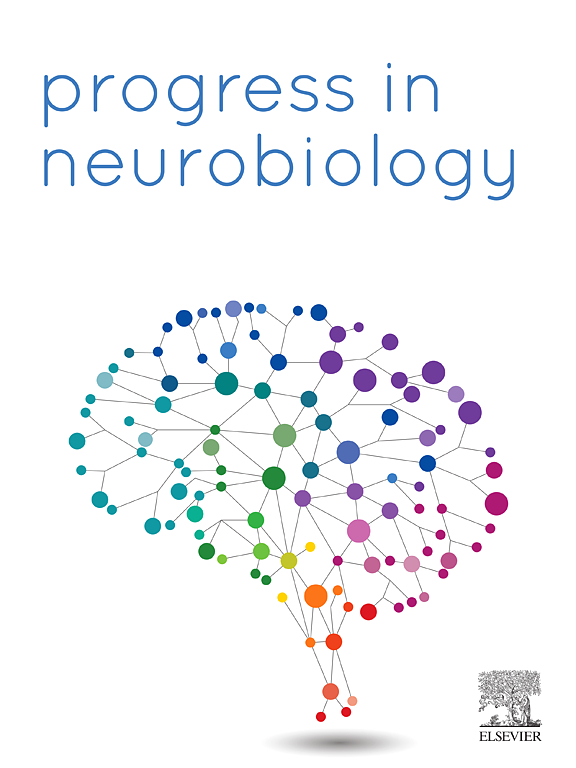Traumatic brain injury from a peripheral axis perspective: Uncovering the roles of liver and adipose tissue in temperature regulation
IF 6.1
2区 医学
Q1 NEUROSCIENCES
引用次数: 0
Abstract
Traumatic brain injury (TBI) is a major cause of death and disability worldwide. Most current treatments for TBI and other neurological disorders focus on the brain, often overlooking the significant contributions of peripheral organs to disease progression. Emerging evidence suggests that organs such as the liver and adipose tissue play crucial roles in TBI pathogenesis. The liver synthesizes lipids and proteins vital for brain function, while adipose tissue provides hormones and metabolites that influence brain activity. New research indicates that the liver and adipose tissue work in concert with the hypothalamus to regulate essential processes, such as body temperature, which become disrupted in TBI. Additionally, the brain-peripheral axis—a complex network of visceral nerve pathways, hormones, and metabolites—plays a bidirectional role in regulating brain plasticity and function. Understanding how TBI leads to dysregulation of the liver, adipose tissue, and other organs could unlock new therapeutic opportunities for treating TBI and related neurological disorders. The intricate autonomic network involving hypothalamic and enteric neurons, along with visceral nerve pathways and hormones, presents both pathological targets and therapeutic potential. We examine scientific evidence suggesting that correcting disturbances in systemic physiology could enhance the brain’s capacity for healing. However, the interdependence of this autonomic network implies that treating dysfunction in one area may affect others. Therefore, we also explore the mechanisms by which diet and exercise can comprehensively impact the brain-peripheral axis, supporting the healing process.
Chemical compounds
D-Fructose (PubChem CID 2723872); docosahexaenoic acid (PubChem CID 45934466); eicosapentaenoic acid (PubChem 5282847);

外周轴视角下的创伤性脑损伤:揭示肝脏和脂肪组织在温度调节中的作用。
外伤性脑损伤(TBI)是世界范围内造成死亡和残疾的主要原因。目前大多数治疗创伤性脑损伤和其他神经系统疾病的方法都集中在大脑上,往往忽视了外周器官对疾病进展的重要贡献。越来越多的证据表明,肝脏和脂肪组织等器官在TBI发病机制中起着至关重要的作用。肝脏合成对大脑功能至关重要的脂质和蛋白质,而脂肪组织提供影响大脑活动的激素和代谢物。新的研究表明,肝脏和脂肪组织与下丘脑协同工作,调节基本过程,如体温,这些过程在创伤性脑损伤中被破坏。此外,脑外周轴——一个由内脏神经通路、激素和代谢物组成的复杂网络——在调节大脑可塑性和功能方面起着双向作用。了解创伤性脑损伤如何导致肝脏、脂肪组织和其他器官的失调,可以为治疗创伤性脑损伤和相关神经系统疾病提供新的治疗机会。复杂的自主神经网络包括下丘脑和肠神经元,以及内脏神经通路和激素,呈现病理靶点和治疗潜力。我们研究的科学证据表明,纠正系统生理紊乱可以提高大脑的愈合能力。然而,这种自主神经网络的相互依赖性意味着治疗一个区域的功能障碍可能会影响到其他区域。因此,我们也探索了饮食和运动可以全面影响大脑外周轴,支持愈合过程的机制。化合物:d -果糖(PubChem CID 2723872);二十二碳六烯酸(PubChem CID 45934466);二十碳五烯酸(PubChem 5282847)。
本文章由计算机程序翻译,如有差异,请以英文原文为准。
求助全文
约1分钟内获得全文
求助全文
来源期刊

Progress in Neurobiology
医学-神经科学
CiteScore
12.80
自引率
1.50%
发文量
107
审稿时长
33 days
期刊介绍:
Progress in Neurobiology is an international journal that publishes groundbreaking original research, comprehensive review articles and opinion pieces written by leading researchers. The journal welcomes contributions from the broad field of neuroscience that apply neurophysiological, biochemical, pharmacological, molecular biological, anatomical, computational and behavioral analyses to problems of molecular, cellular, developmental, systems, and clinical neuroscience.
 求助内容:
求助内容: 应助结果提醒方式:
应助结果提醒方式:


